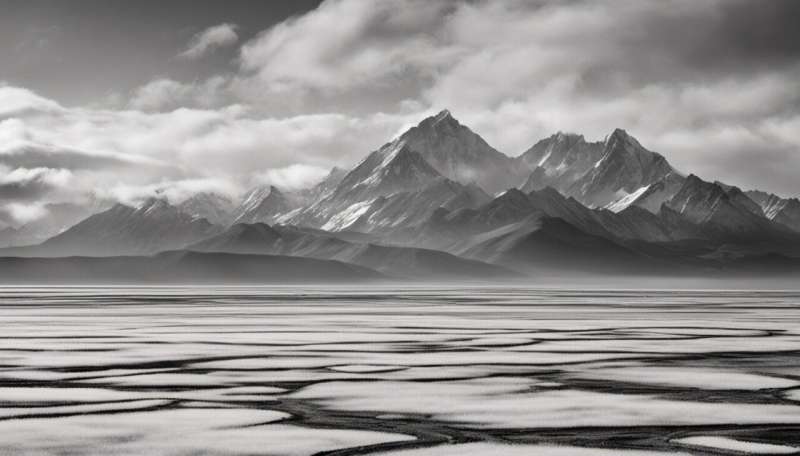Tibetan Plateau may be older than previously thought

(Phys.org) -- The growth of high topography on the Tibetan Plateau in Sichuan, China, began much earlier than previously thought, according to an international team of geologists who looked at mountain ranges along the eastern edge of the plateau.
The Indian tectonic plate began its collision with Asia between 55 and 50 million years ago, but "significant topographic relief existed adjacent to the Sichuan Basin prior to the Indo-Asian collision," the researchers report online in Nature Geoscience.
"Most researchers have thought that high topography in eastern Tibet developed during the past 10 to 15 million years, as deep crust beneath the central Tibetan Plateau flowed to the plateau margin, thickening the Earth's crust in this area and causing surface uplift," said Eric Kirby, associate professor of geoscience, Penn State. "Our study suggests that high topography began to develop as early as 30 million years ago, and perhaps was present even earlier."
Kirby, working with Erchie Wang, Institute of Geology and Geophysics, Chinese Academy of Sciences, Beijing, and Kevin Furlong, professor of geosciences, Penn State, and colleagues from Waikato University, New Zealand and Arizona State University, looked at samples taken from the hanging wall of the Yingxiu-Beichuan fault, the primary fault responsible for the 2008, Wenchuan earthquake. The researchers used a variety of methods including the decay rate of uranium and thorium to helium in the minerals apatite and zircon and fission track dating, an analysis of tracks or trails left by decaying uranium in minerals again in apatite and zircon.
"These methods allow us to investigate the thermal regime from about 250 degrees Celsius (482 degrees Fahrenheit) to about 60 degrees (140 degrees Fahrenheit)," said Kirby. "The results show that the rocks cooled relatively slowly during the early and mid-Cenozoic -- from 30 to 50 million years ago -- an indication that topography in the region was undergoing erosion."
The results also suggest that gradual cooling during this time was followed by two episodes of rapid erosion, one beginning 30 to 25 million years ago and one beginning 15 to 10 million years ago that continues today.
"These results challenge the idea that the topographic relief along the margin of the plateau developed entirely in the Late Miocene, 5 to 10 million years ago," said Kirby. "The period of rapid erosion between 25 to 30 million years ago could only be sustained if the mountains were not only present, but actively growing, at this time."
The researchers also note that this implies that fault systems responsible for the 2008 earthquake were also probably active early in the history of the growth of the Tibetan Plateau.
"We are still a long way from completely understanding when and how high topography in Asia developed in response to India-Asia collision," notes Kirby. "However, these results lend support to the idea that much of what we see today in the mountains of China may have developed earlier than we previously thought."
Journal information: Nature Geoscience
Provided by Pennsylvania State University
















